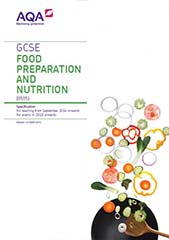3.4 Food safety
This section requires students to demonstrate their knowledge and understanding of the following subject content:
Food spoilage and contamination
Microorganisms and enzymes
|
Content |
Students must know and understand |
Suggested application and food preparation skills |
|---|---|---|
|
|
|
The signs of food spoilage
|
Content |
Students must know and understand |
Suggested application and food preparation skills |
|---|---|---|
|
|
|
Microorganisms in food production
|
Content |
Students must know and understand |
Suggested application and food preparation skills |
|---|---|---|
|
the use of microorganisms in food production. |
|
Make a bread dough, finish and shape a bread dough for use in flat breads, pizza or calzone (S4 and S10). |
Bacterial contamination
|
Content |
Students must know and understand |
Suggested application and food preparation skills |
|---|---|---|
|
Contamination from:
|
Principles of food safety
Note: All temperatures and guidance in accordance with current Food Standards Agency (FSA) guidelines.
Buying and storing food
|
Content |
Students must know and understand |
Suggested application and food preparation skills |
|---|---|---|
|
The food safety principles when buying and storing food. |
|
To apply food safety considerations when preparing, storing and cooking. |
Preparing, cooking and serving food
|
Content |
Students must know and understand |
Suggested application and food preparation skills |
|---|---|---|
|
The food safety principles when preparing, cooking and serving food. |
|
|
